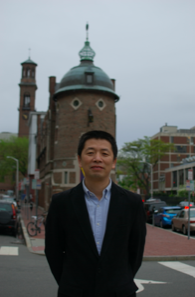
Title: Digital and historical data integration: A three-dimentional reconstruction of Shanghai urban transformation
Directors: FENG Xiaocai and Christian HENRIOT
Discipline: History
Status: Completed Project
Starting date: 2013
Directors
Summary
The Research Center on Shanghai History at East China Normal University and the Institut d’Asie Orientale (Lyons Institute of East Asian Studies) at Ecole Normale Supérieure de Lyon are joining forces in this collaborative research project to promote further interdisciplinary research in combining digital technologies and new urban history and to strive toward a renewal of the discipline of history.
It is well known that Shanghai has become the most studied city by all counts among historians. This can be seen as a curse or a blessing, but it also shows that the "Shanghai field" offers a very rich and diverse body of works. Many challenges, however, obviously remain. The proposed two-year program is built around two major research directions. Each will focus more specifically on a set of materials (spatial and demographic data; economic and sociological data; visual sources, etc.), and methodologies (database design, visual processing, oral history, etc.), even if by virtue of the establishment of a common platform the two research directions will intersect and draw on each other in elaborating a new history of Shanghai. The first research direction intends to establish an innovative approach to the processing of historical data from the extraction of basic units of information spread across a wide range of primary materials, to their compilation in database form, to their visualization under cutting-edge technology. Our interest lies in social and cultural history. Research into the history of Shanghai has paid too much attention to the story of urban modernization and economic prosperity. In this project, we intend to take up contrasting aspects of everyday life to observe the forces that worked through and reshaped local society over a half century. The second research direction will examine mainly the tremendous changes the Shanghai industrial and commercial sectors underwent after 1949 and will explore the significant impact of the state system on the urban population and the urban structure itself. It will focus on the transformation of private industry and commerce in 1950s, as well as on commercial and industrial changes that occurred thereafter. Through the combing of original archival files and the collection of oral historical data, we plan to reconstruct the history of the socialist transformation of private industry and commerce in Shanghai. Compared with previous research, our study will place the focus on how people reacted to change and were the actors of that transformation. The scope of the study includes the industrialists and businessmen of the upper and middle classes, but also the majority of small business operators that thrived in the city.







